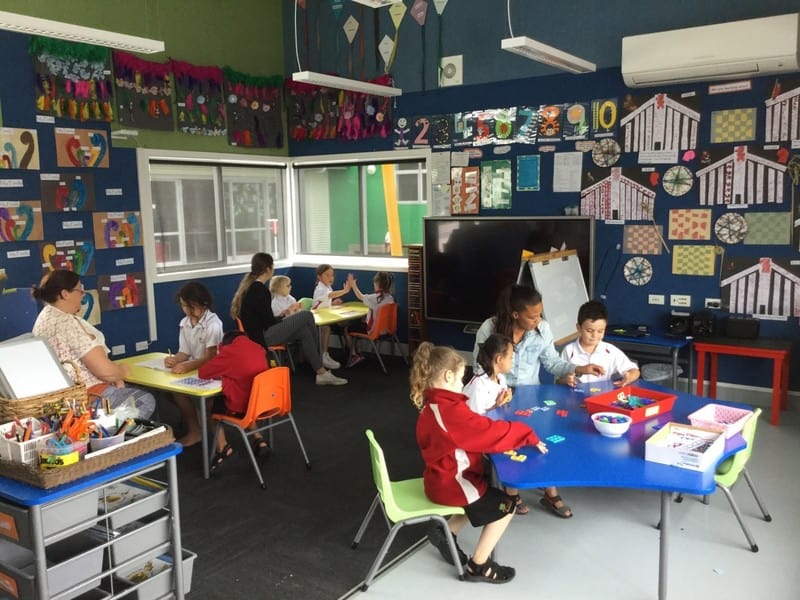Welcome to the World of Primary Schools in NZ: A Parent’s Handbook
Hey there, lovely parents! Are you starting to think about your child’s educational journey? Feeling a bit like a deer in headlights with all the info out there? Fear not! We’re here to light the way through the enchanting forest of primary schools in New Zealand.
Take our hands as we skip down the pathway to demystifying the educational landscape of Aotearoa—The Land of the Long White Cloud. New Zealand’s primary education system is as unique and diverse as its beautiful landscapes, and understanding it is the first step to ensuring your child gets the best possible start to their schooling.
Chapter 1: Laying the Groundwork – What is Primary Education in NZ?
In New Zealand, primary education caters to children from Year 1 to Year 8, typically between the ages of five and thirteen. It’s a place where your kids will learn everything from the alphabet and basic numbers to how to play nice in the sandpit (super important life skills, let’s be real). Also, it’s where they start building the foundation for their future learning—both academically and socially.
Subsection: Understanding the Structure
Primary education in New Zealand is broken down into two stages:
- Years 1 to 6: This is considered ‘primary schooling’ for children aged 5 to 10.
- Years 7 and 8: Often referred to as ‘intermediate schooling’, this caters to children aged 11 to 13.
Despite these stages, it’s not all cut and dry. Some schools, known as full primary, offer complete primary education from Years 1 to 8 under one vibrant, happy roof. Meanwhile, others might split the experience into contributing primary (Year 1 to 6) and intermediate schools (Year 7 to 8).
Chapter 2: The Enchantment of Enrolling – How to Get Started
Enrolling your tiny tot into a primary school is like planning the perfect birthday party—it requires timing, preparation, and a sprinkle of patience. In New Zealand, children typically start school on their 5th birthday, and they are required to be enrolled by their 6th birthday.
Subsection: Enrollment Guidelines
Here are some magical steps to follow:
- Find out the zone in which you live. Many schools have a geographical ‘zone’ that gives priority to local children.
- Research the schools within your zone. Visit their websites, attend open days, and talk to other parents in your community.
- Once you’ve chosen your favoured school, contact them to find out about their enrollment process.
- Complete the necessary forms and provide required evidence, which typically includes a birth certificate or passport, immunization records, and proof of address.
Remember, it’s about finding the right environment where your child will blossom both academically and socially. So, don’t rush this process! You’re not just looking for a school—you’re looking for a partner in nurturing your child’s potential.
Chapter 3: Curriculum Charms – What Will They Learn?
A quality education is like a potion brewing with knowledge, skills, and values. In primary schools across New Zealand, the national curriculum is designed to empower children to explore and excel in a safe and supportive environment.
Subsection: Key Learning Areas
Your munchkins will plunge into a learning odyssey through eight essential learning areas:
- English
- The Arts
- Health and Physical Education
- Language Learning
- Mathematics and Statistics
- Science
- Social Sciences
- Technology
But don’t worry, it’s not all about textbooks and exams. New Zealand’s education system values inquiry and curiosity as much as it does formal learning. It encourages tamariki (children) to engage with the world around them and to think critically and creatively.
As this comprehensive guide stretches out before you like the first page in your child’s favorite storybook, get ready to turn the page and continue the adventure. Understanding the heart and soul of NZ primary schools will help ensure that your child’s educational journey is nothing short of miraculous.

Chapter 4: Preparing Your Child for School – A Parent’s Checklist
Before your little learner steps through those school gates, there’s a bundle of things you can do to set them up for success. Here’s the scoop on five essential tips for parents to prepare for primary schools in New Zealand:
Subsection: The Fabulous Five – Tips for Parents
- 1. Start the conversation early: Talk with your child about school in an exciting and positive way. Discuss what they might do there, who they might meet, and the fun they will have learning new things.
- 2. Develop routines: Establish bedtimes, morning schedules, and reading habits before school starts. Routines give children a sense of security and help them manage the school day with more ease.
- 3. Visit the school together: If possible, visit the school with your child. A familiarization trip will reduce first-day jitters. Let them explore the playground, meet a teacher, or even sit in on a class if the school allows.
- 4. Encourage independence: Skills like dressing, using the toilet, opening lunch boxes, and packing their bag are important. The more your child can do these things on their own, the more confident they’ll feel.
- 5. Literacy and numeracy: Expose your child to letters and numbers through play. Read books together, practise writing their name, and count objects during everyday activities.
Remember, every child is different. What works for one may not work for another, so be flexible in your approach. Your support and encouragement are the most powerful tools in helping your child adjust to school life.
Chapter 5: The Community Connection – Beyond the Classroom
Primary schools in New Zealand aren’t just about learning; they’re hubs of community activity where parents can get involved too.
Subsection: Engaging with the School Community
Here are some heartwarming ways to engage:
- Become part of the Parent Teacher Association (PTA) or volunteer for school events and fundraisers.
- Support your child by attending school functions, such as assemblies, sports days, and cultural celebrations.
- Communicate regularly with your child’s teacher to stay informed about their progress and ways you can help from home.
By immersing yourself in the school community, you help create a vibrant and supportive environment for all the children. Plus, it’s a fantastic way to make new friends and feel connected!
Chapter 6: The Digital Realm – Technology in Education
Technology is a dazzling part of modern education, and New Zealand primary schools are on top of it!
Subsection: Embracing Educational Technology
Here are some technological tidbits you might find in NZ primary schools:
- Interactive whiteboards and digital learning tools enhance lessons, making learning an adventure.
- Schools may provide or recommend devices like tablets or laptops for students to use in class or at home.
- Learning management systems (LMS) enable you to keep track of your child’s assignments and progress online.
- Online safety is a priority, with lessons on cyber-safety and positive online behavior.
It’s a wonderful idea to familiarise yourself with the tech your child will be using. That way, you can guide them through their digital learning and ensure they’re making the most of these modern tools.
Now that you’ve had a sneak peek into the sparkly world of primary schools in New Zealand, let’s continue this journey together. With these chapters as your guide, your child’s leap into learning is set to be a joyful skip into a future of endless possibilities.
See more great Things to Do with Kids in New Zealand here. For more information see here
Disclaimer
The articles available via our website provide general information only and we strongly urge readers to exercise caution and conduct their own thorough research and fact-checking. The information presented should not be taken as absolute truth, and, to the maximum extent permitted by law, we will not be held liable for any inaccuracies or errors in the content. It is essential for individuals to independently verify and validate the information before making any decisions or taking any actions based on the articles.




